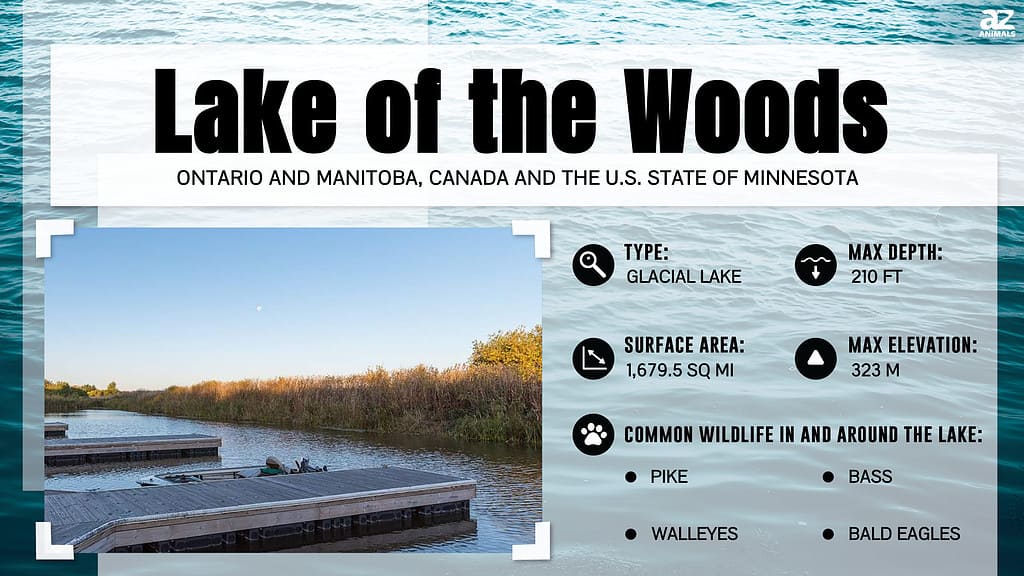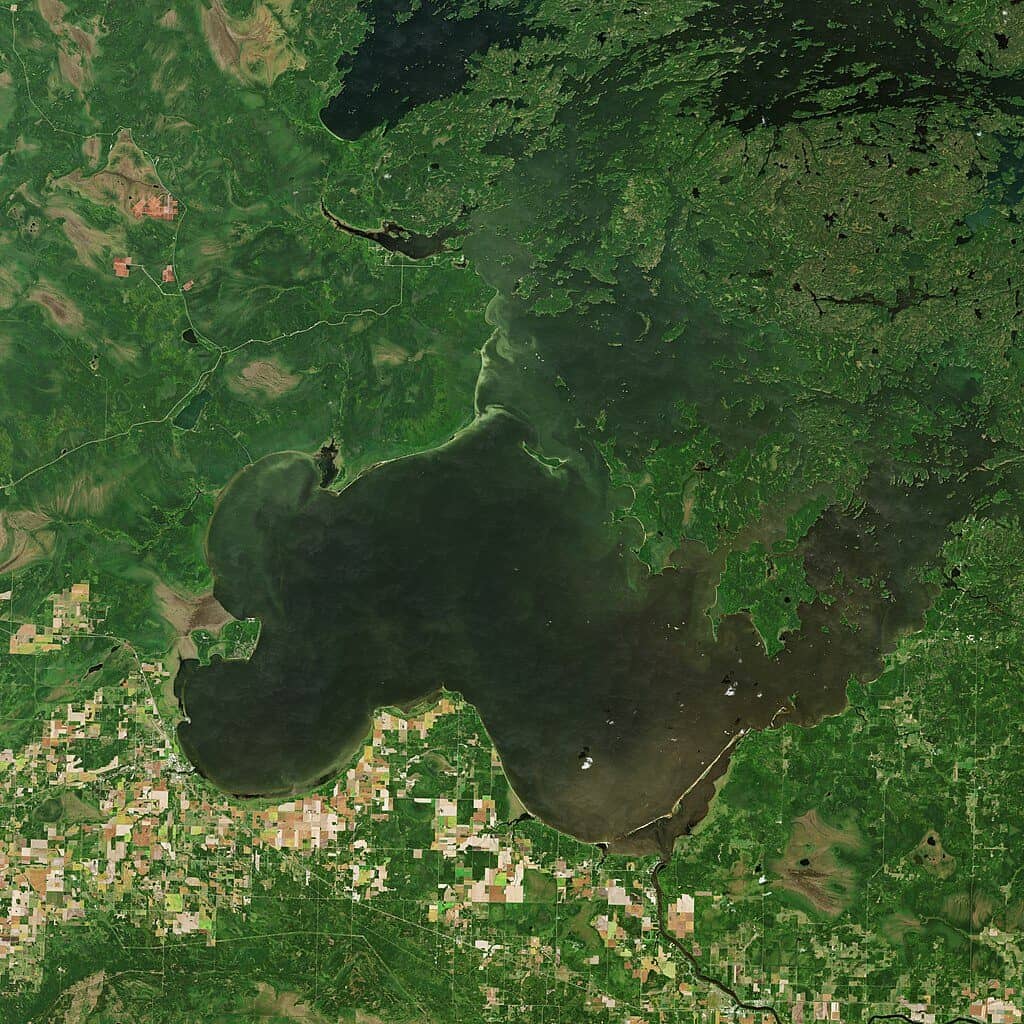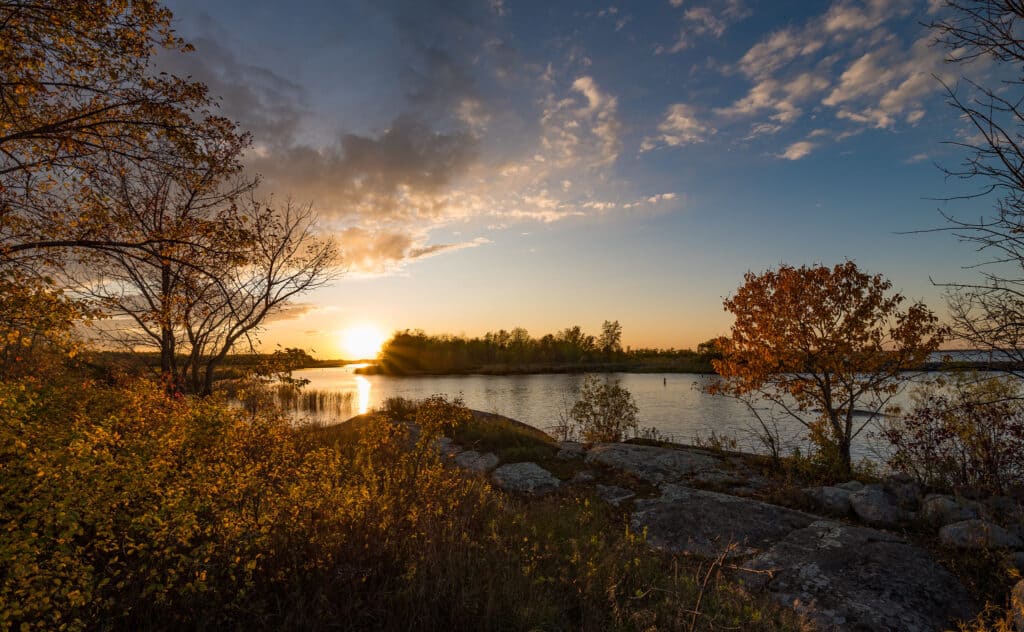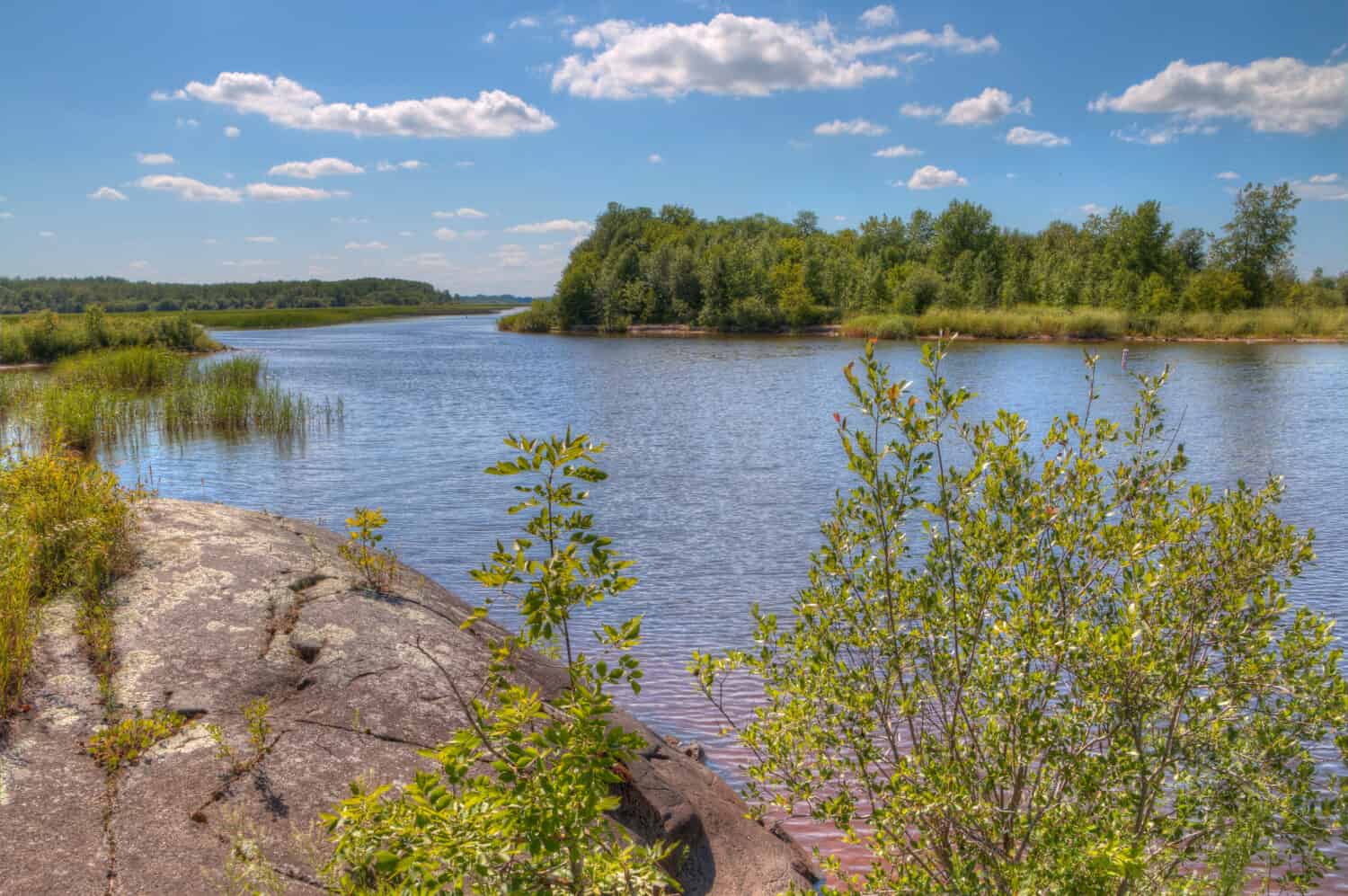Lake of the Woods is a North American lake that spreads across the provinces of Ontario and Manitoba and reaches down into the midwestern state of Minnesota. This massive lake spans over 67 miles in length and 59 miles in width. This is the 36th-largest lake in the world and the sixth-largest in the United States! This vast body of water is rich in history and wildlife. There is so much to explore along its 65,000 miles of shoreline. How old is Lake of the Woods and what caused it to form? A quick query in a search engine reveals many more questions about the lake, from its fish population to its beaches to its depth.
So, how deep is Lake of the Woods? We’re going to answer this question – and many more – in the following sections.

Formation of Lake of the Woods
Lake of the Woods has an incredible history, and we’re going to have to jump all the way back to the Pleistocene era to get a good scope of its formation. Have you heard of Lake Agassiz? Lake Agassiz was a massive preglacial lake that stretched further than all of the modern-day Great Lakes combined. This lake had a long geological progression before becoming the series of lakes it is today. The lake reached a maximum size that covered a surface area comparable to that of the Black Sea. This made it the largest lake in the known history of the world. But this was over 13,000 years ago!
As history progressed, the waters of the lake slowly receded, leaving a collection of lakes and nutrient-dense lands where Agassiz used to be. Lake of the Woods is a result of this change. It joins Lake Winnipeg, Lake Manitoba, Rainey Lake, and several others as descendants of Lake Agassiz, resting in an extinct lake basin. Many of these lakes are still connected – Rainey Lake drains into Lake of the Woods via the Rainy River. Lake of the Woods drains into Lake Winnipeg via the Winnipeg River. These lakes still have a lot of similarities because of their shared origin.
Experts believe Lake of the Woods was formed as many as 10,000 years ago following the recession of Lake Agassiz.
Geography of Lake of the Woods

Lake of the Woods had a long geological progression before becoming the series of lakes it is today.
©Copernicus Sentinel-2, ESA / CC BY-SA 3.0 IGO – Original / License
Lake of the Woods is beautiful and rich in geographical features. This is, in part, thanks to its ancestor, Lake Agassiz. The waters rest atop ancient bedrock that is thought to be some of the oldest on Earth. The waters are relatively shallow in most places and the shape of the lake is quite irregular. It is populated with over 14,500 islands, which contribute to the 65,000-mile shoreline statistic. With these islands included, the shoreline of Lake of the Woods even exceeds the shoreline of Lake Superior! These islands also give the lake its original name – “Lake of the Islands.” French fur traders who came to the area in the 1600s confused the name in translation from Native languages and accidentally renamed it “Lake of the Woods.” This name is also fitting, due to the dense, lush forests that surround it.
Thick coniferous forests line a large portion of the shoreline, complemented by rocky outcroppings of granite and other bedrock. Steep cliffs rise from the water at some parts of the shoreline creating scenic vistas. TourismKenora on Youtube shared a beautiful video showcasing much of the natural beauty of the lake. It shows the beauty of the waters and lands while speaking on our integral connection to places of natural beauty.
How Deep is Lake of the Woods?
Lake of the Woods reaches a maximum depth of 210 feet. There is some contention about the maximum depth here. Some sources quote the depth as reaching a maximum of 310 feet. We wanted to ensure that our information was accurate, so we reached out to the Minnesota Department of Natural Resources, who confirmed that the true maximum depth of the lake is, in fact, 210 feet. The DNR also referred us to their LakeFinder page, which offers comprehensive information about over 4,500 lakes in Minnesota.
Interestingly, this level of depth can only be found on the Canadian side of the lake. We also reached out to Joe Henry, the executive director of Lake of the Woods Tourism. He told us that the maximum depth of the lake on the United States side is only 38 feet. He revealed that this was the reason for great walleye fishing – walleye prefer moderately deep, warm water with lots of nutrients.

Lake of the Woods reaches a maximum depth of 210 feet.
So why do some websites claim that the maximum depth of the lake is 310 feet? Good question! According to the Oak Island Resort page, the lake has a few isolated areas with deep fissures in the bottom. These fissures reach 100 feet in depth, which changes the overall maximum depth of the lake when we include them in our scope.
Now, let’s look at how it stacks up against other lakes in the region and across the country. To do this, we have created two separate tables. The first table displays the maximum depth of other lakes in the region. The second table shows the depths of various lakes across the United States and includes some of the nation’s deepest lakes and a few lakes of similar depths to Lake of the Woods.
| Lake | Maximum Depth (in feet) | Average Depth (in feet) |
|---|---|---|
| Lake Winnipeg | 118 | 39 |
| Lake Manitoba | 25 | 12 |
| Rainey Lake | 161 | 35 |
| Red Lake | 37 | 12-15 |
| Lake Winnipegosis | 12 | 3.2 |
Now, let’s check out that second table!
| Lake | Location | Maximum Depth (in feet) | Average Depth (in feet) |
|---|---|---|---|
| Lake Superior | Minnesota, Michigan, Wisconsin, and Ontario (Canada) | 1,332 | 483 |
| Crater Lake | Oregon | 1,949 | 1,148 |
| Lake Peigneur | Louisiana | 200 | 3 |
| Lake Erie | Michigan, Ohio, Pennsylvania, New York, and Ontario (Canada) | 210 | 62 |
| Flathead Lake | Montana | 370 | 164 |
| DeGray Lake | Arkansas | 200 | 47 |
| Owasco Lake | New York | 177 | 96 |
| Sebago Lake | Maine | 316 | 107 |
| Bear Lake | Utah | 208 | 94 |
| Lake Murray | South Carolina | 200 | 41.5 |
Where is Lake of the Woods on a Map?
To provide you a better idea of where the lake is, we’ve included this interactive map. We’ve selected Long Point, Minnesota as our point of reference for the map. You can see the top of the lake at Kenora, Ontario.
Wildlife at Lake of the Woods

Maybe you’ll catch a glimpse of one of the area’s most beautiful wild rabbits – the
snowshoe hare
.
©FotoRequest/Shutterstock.com
There is no shortage of wildlife to see when you visit any portion of Lake of the Woods. Fish are a big part of the biome and Lake of the Woods boasts the title “Walleye Capital of the World“. There are tons of other fish species that swim in the waters, including black bullhead, smallmouth bass, silver lamprey, logperch, brassy minnow, northern pike, and lake whitefish.
Fish aren’t the only animals that hang around this massive lake. One tourist favorite is the moose. Moose only roam a handful of states, so it’s a rare and wonderful treat for most Americans to spot one. Other large mammals include the American black bear, the bobcat, and the white-tailed deer. Foxes and groundhogs meander around the shore, along with chipmunks, squirrels, and the beautiful snowshoe hare.
Birds flock to the waters, both year-round nesters and migratory. Visitors might be lucky enough to see rare birds such as the American white pelican. This amazing bird only nests in three places in Minnesota, and Lake of the Woods is one of them! Other birds you might spy include great blue herons, osprey, and the endangered piping plover.
As always, remember to be respectful when viewing wildlife. The natural habitats of animals depend on us as humans to survive. Pack out your trash, stay on designated trails, and be careful not to approach wildlife that you do see. Wild animals are incredible partially for their wildness so it is important to limit our interactions to preserve that wildness and ensure their survival.
Thank you for reading! Have some feedback for us? Contact the AZ Animals editorial team.








